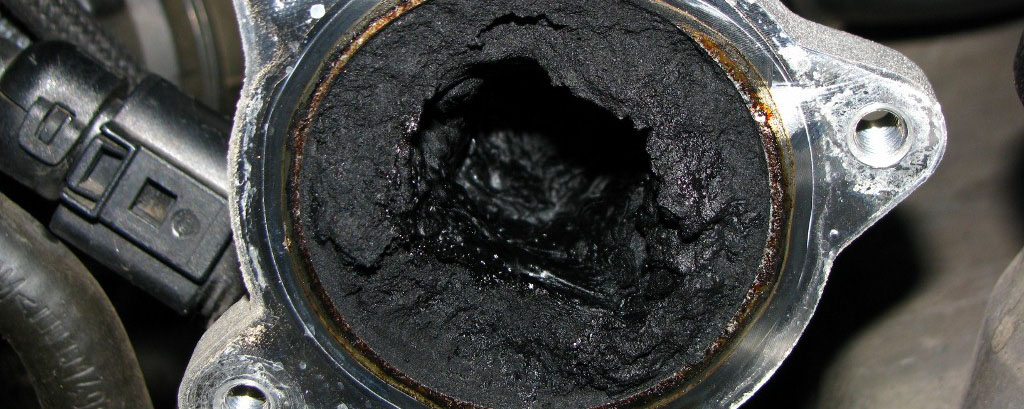
Issues with Diesel Particulate Filters are a hot topic with modern diesel car owners however there’s another mechanical gremin in the form of the Exhaust Gas Recirculation Valve or EGR that’s been plaguing drivers for much longer.
What is an EGR Valve?
An EGR or Exhaust Gas Recirculation Valve is a device that recirculates a portion of your exhaust gases back into the combustion process (inlet). This process is primarily aimed at reducing the levels of nitrous oxide (NOx) being emitted through the exhaust system.
NO2 is a harmful air pollutant in its own right, but also reacts in the atmosphere to form ozone (O3) and acid rain. Nasty stuff!
How does an EGR valve work?
EGR valves work by redirecting a proportion of the vehicles exhaust gas back into the intake manifold. In older generation of vehicles the EGR valve was controlled by simple sensors like temperature and vacuum. In modern vehicles they are controlled by the brain or ECU (Electronic Control Unit).
What are the benefits of an EGR valves?
- Reduced EmissionsThe valve reduces the production of nitrous oxide using recirculated exhaust gases, this has the effect of cooling down the combustion chamber temperature. The dangerous Nitrous Oxides emissions are formed when engine chamber temperatures rise above 2500 F. By keeping the combustion chamber cool the EGR valve is able to reduce nitrous oxide NOx emissions produced by the vehicle’s engine.
An EGR valve also benefits your vehicle by
- Reducing the potential of throttling losses on spark ignition engines (i.e. Petrol) at part load
- Improving engine life through reduced cylinder temperatures (particularly exhaust valve life)
[ad]
How will I know if my EGR valve is malfunctioning?
As with most modern cars, when the ECU detects an issue it will display either the relevant warning light or the check engine light. If you have access to a ODB ii tool you may well be able to read the fault code the car is reporting. The most common code reported for a faulty or malfunctioning EGR valve is
- P0401 – Insufficient EGR Flow
- P0402 – Exhaust Gas Recirculation Flow (EGR) Excessive Detected
- P0403 – Exhaust Gas Recirculation Circuit Malfunction
If you don’t have access to a ODB ii scanning tool then it may well help you diagnose this and future issues without the need of a mechanic, thus saving you costly diagnostic feels. Both ebay and amazon have a large ranges of ODB ii tools available at very reasonable prices.
If you are reporting one of the codes above then it may also help to seek advice from one of the many forums or owners clubs catering for your model of car to see if someone can confirm what the error code corresponds to.
What are common problems associated with EGR valves?
Even though EGR valves provide vast environmental and air quality benefits, they are also associated with issues which are most commonly experienced by diesel car owners.
- Increased exhaust particulates
EGR valves reduce the available oxygen in the cylinder, this in turn increases the production of particulates (fuel which has only partially combusted). This is most commonly experienced by diesel engines traditionally been a problem with diesel engines. These particulates are one of the main reasons diesel engines are now fitted with the diesel particulate filters or DPFs. A faulty EGR valve that is stuck open will increase the amount of particulates produced by the engine, causing your DPF to become blocked quicker than usual. Read more about DPF filters in our diesel particulate filter FAQ page.
- Detonation
This is also known as pinging or spark knock. This can occur when your EGR system simply isn’t working, when the EGR valve is disabled or when your exhaust port is clogged with carbon. - Misfiring or rough idle
This happens when your EGR valve fails to close, causing exhaust to leak into your intake manifold. - Hard starting
This may occur when the EGR valve isn’t closing, thus resulting in a vacuum leak into your intake manifold.
How to clean an EGR valve?
Over time EGR valves and malfunction due to a build-up of carbon and other deposits associated with the exhaust gasses passing through them. This can cause the device to be stuck open, closed or even fail completely.
These harmful deposits can be removed using a number of ways
- Replacing the EGR Valve
The quickest, simplest and quickest way to unblock an EGR valve is to replace the unit with a new one. Theres no soaking or elbow grease required however unless you are handy with the spanners your local mechanic will charge you for this procedure. - Removal and Cleaning of the EGR Valve
The next best option to replacing the EGR valve is to have it cleaned. This also required the removal of the device however without the added expense of the replacement parts. Usually the valve is submerged in a solution such as carb cleaner and left for a period of time. It can then be fully cleaned using some sturdy brushes and a small application of elbow grease. Just remember not to submerge any electrical connectors if you are leaving it to soak and make sure you replace any gaskets that you have to remove. - EGR cleaning Sprays
If removing the EGR valve is a little beyond your mechanical ability then there are various EGR cleaning sprays available from retailers such as Amazon. These are sprayed directly into the inlet manifold (after the turbo) or directly into the intake system (remove the air filter and spray). They contain an chemicals that dissolve gum, lacquer, tar, carbon and deposits from the valving, allowing it to work correctly.
These products are designed to clean the entire intake system and the EGR valve and judging by the forum posts and review I have read seem to work very well. Just be careful to follow the directions closely.
- Fuel additives
There are a number of fuel additives available that claim to be able to clean an EGR valve without any removal or physical cleaning of the device. We suggest that you steer clear of such products and invest your time and money into either having it cleaned professionally or taking the time to do the job yourself.
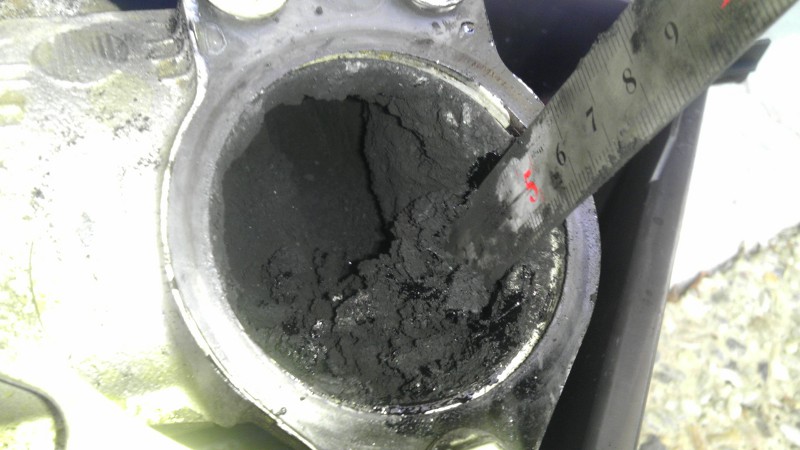
Blocked EGR Valve showing huge soot and carbon deposits build up
How do I remove / block an EGR valve?
A whole industry has built up around the removal and blocking of problematic EGR valves. The blocking or complete removal of the valve is still a contested subject. Before you reach for the blanking plate please take the following into consideration.
- Removing it won’t improve performance
EGR valves do not open when the throttle is wide open. Removing it will not give you a couple of horses extra for the traffic light GP however a malfunctioning may well reduce your power. - Removing it won’t save you fuel
As above the EGR is designed to reduce combustion chamber temperatures in order to reduce harmful emissions. A side effect of this is that the engine runs more efficiently in the process, saving you fuel and the environment from harmful nitrous oxide (NOx) emissions.
[amazon_link asins=’B00VVXBQBM,B00BKC9LHA,B00P6J976I,B00BKC9KU8,B00VVYZJPA,B01N5NNFTA’ template=’ProductCarousel’ store=’hypermiler-21′ marketplace=’UK’ link_id=’8b4eca85-10ae-11e7-91bf-49520dc3cf9e’]
Is it illegal to remove or disable your EGR valve?
This is a question posted in the comments section of this page and a very good one at that. You can read more about that in our Is it illegal to remove or disable your EGR valve page.
We hope you found this article useful and we’ll be adding to it’s content as time goes by. We’d love to hear about your experiences with your EGR related issues so please feel free to leave a comment below
[ad]

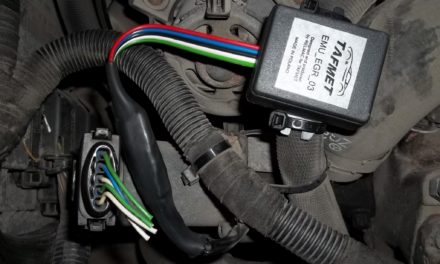
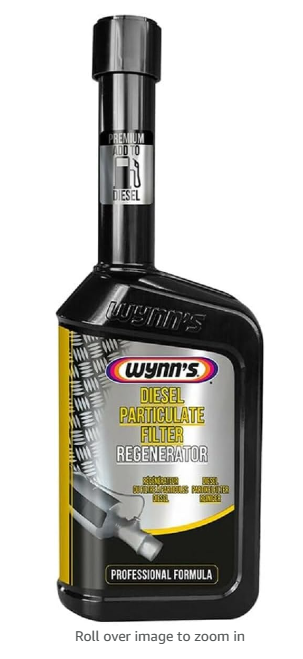
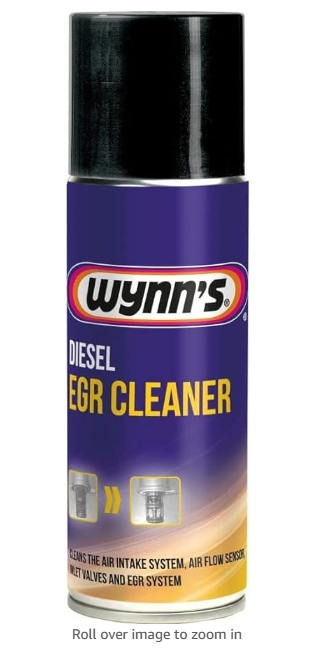
M learning to b a hypermiler. Do u have online mags that i can go thru to improve .
Can u shed some light on vehicles that r now coming with CVT transmission
e90 330d problems with a thumping noise while the pipe it connected to the egr valve but goes away when pipe not on but warning light comes up help please
You are wrong about the erg valve reducing combustion chamber temperature it increases the temperature the recalculated exhaust gases are hot so how would they cool the chamber
Hi Ben
Thanks for your comment.
In modern diesel engines the EGR gases are passed through an EGR cooler.
This temperature reduction helps keep combustion temperatures below 2,500 degrees thus keeping it below the the threshold where NOx is formed.
Hope this helps.
Regards Karl
He cool the chamber by first passing the gasses through an egr cooler
The EGR opens to cool down or quench the combustion process, it does not raises the temperature of combustion process. The EGR opens to admit “spent” exhaust gas charge to mix with the fresh charge in the cylinder, since there is less oxygen to burn (the spent gases have mixed with the new) combustion will be slower and at lower temperature
Help. Firstly I have to say that I am a total novice when it comes to cars I just about know which to put the fuel in. I was driving my 2011 Nissan Qashqai (1.5 diesel) home when it lost power. I stopped and saw that a large hose going into the centre of the engine had been severed. The car was recovered and the local garage came round the next day and fitted a repalcement hose in about ten minutes. they could then not get any power into the engine. 10 days later and two “expert” auto electricians later they still cannot diagnose the fault and want to take it to Nissan. They reckon its either the EDR valve (although I can only find refernces to an EGR valve) or the DPF filter. They reckon its gonna cost me about £1,200 assuming that it is one of those things. Any ideas greatfully received.
I have a Diesel Ford Fiesta 2007 and had issues with power being lost sporadically, not long after a Engine warning light showed up on the dashboard. We had a diagnostic check and was told it was an issue with the Exhaust Gas Re circulation and that the EGR valve needed to be replaced.
A local mobile mechanic changed it for me for just over £200, but a week later the issue seems to return intermittently. We need to do a long drive in the car next week and I’m worried the issue could have serious ramifications.
Is there anything anyone can suggest as to what may be causing it and any tips on what top do?
Er, isn’t it illegal to remove or block the EGR valve in a vehicle? i.e tampering with a pollutant control device. Your article does not mention this aspect.
Hi David
Thanks for your comments – we’ve added a section and new page to answer your question
http://www.hypermiler.co.uk/technical-guides-and-faqs/is-it-illegal-to-remove-or-disable-your-egr-valve
Cheers!
gimmick to get more money from motorist when they go wrong show me the pollutant charts with and without egr
I’ve been told by my local garage that removing the EGR software is not illegal (I haven’t yet navigated to reading the article on this website). Currently ‘trying to be’ in a wrangle with Audi following the emissions ‘fix’ that was thrust upon us unexpectedly when I turned up for MOT last week (the actual fix wasn’t unexpected, just that it was going to be done there and then). Driving the car home, it glugged and about 100 miles later the glo plug light illuminated. Diagnostics have revealed EGR failure. I’m reliably informed that following the fix, the EGR valve will be working harder to recirculate the gas and is most likely to be the trigger/cause of the issue. There were no issues prior to fix/MOT. Audi have not returned any calls following my initial contact/enquiry (I’ve had to have a local diagnosis, as the workshop was full for 2 weeks). Their lack of customer care (direct contact with dealership and CustomerCare on Twitter) leads me to think that they knew exactly what had happened to my car when I phoned. Carefully considering my actions!
I also had an issue with EGR fault after the emissions “update”, just cost me £650 to rectify via a non Audi shop after they quoted me £1372!! Despite my protests that it happened immediately after the update Audi don’t want to know, I always use premium fuel with cleaners and service the car regularly. Interesting comment from the garage I did use was “this is the 6th or 7th one I’ve sorted with the same symptoms” I think Audi are lying…..!
Hi
You might want to really give them some grief – even after you’ve paid for the work to be done. We’ve had two VAG owners (Audi and Seat) successfully claim the majority of the costs back. We had a guy get in contact yesterday who managed to have Seat pay 90% of the EGR replacement. I’m putting together some more information with details on how they achieved this.
Hi… just been reading through these comments and my egr valve on my Audi A3 TDI is having to be replaced, which I believe is a result of the ‘fix’
My engine light came on the same day as I had had this ‘fix’ done by Audi, I called them and they said it was nothing to do with what they had done. Reading up on it now it looks as if it is!
how should I go about contacting Audi regarding this, as they should refund me what its costing me at my local garage to get this EGR valve replaced.
Any help would be much appreciated.
Kind regards
Hi Nat
Firstly get in contact with your dealership and explain the issue – make sure you point out the countless other people having the same issue. If they don’t play ball then get in contact with Audi UK and give them what for. Don’t allow them to fob you off, most people who kick up a fuss are getting it sorted FOC – if you’re up to date with your servicing it also helps.
Let us know how you get on.
Cheers
Karl
Tried everything that’s mentioned on here.Audi uk are a waste of time ! I’m now £453 lighter!
Hi Nicola
Sorry to hear about that.
Whats the Make Model Year Mileage and service history of your car. Seems odd that they are not willing to offer any good will payments.
Dear Sir,
I face egr valve failed problem.
It’s not open ansd close.and also carbon problem..when carbon contain in egr that time we use spray.. But after use of spray we again face that type of problem. So if possible please give permanent solution for that..
Hi can you help me out, i just used an EGR cleaner spray on my car, now my engine is making a bad noise on the bottom, if i try to rev up it gets bad, can you tell what is wrong with it please
Could you tell me if the fault on my car, a 2011 skoda superb 11 2.0 tdi, is a failed egr valve? If I put a blank between the egr the car runs fine but if I remove it it fails to start. Any advice really welcome
Hi there I need some help please.
My Audi A3 was recalled for the emissions update and a day later my engine management light came on. I took my car back and after checks they now tell me that I need a new egr at a cost of over £ 1000. They say it has nothing to do with them but the car was fine before it went in. Now the emissions light has come on and still they say not there problem. Don’t know what to do next ??? Any help would be appreciated
TCTG and Andy how did you get on?
My A3 had the emissions fix done on Monday and then today when my wife drove it for the first time the engine management light/glow plug light started flashing and then it went into limp home mode.
Called recovery as we got fed up waiting for Audi to return call, they put diagnostics on it and it came up with EGR valve fault. Its now been taken to Audi and they’re going to look at it tomorrow…
This happened to me too!! I had the emissions update and now I need a new EGR valve, and they quoted me £1,125! So I am taking it elsewhere but I do also think it was fine before it went in, so annoying.
This happened to my Q3 less than 3 weeks after the update. It needs something done with the ERR valve at a cost of £1300. Audi say they are 100% sure it is not down to the update. My car was running perfectly fine before the update. How did you get on at the garage?
*Q5 and EGR!
Well they wanted about £1200 to replace the EGR cooler but as a ‘gesture of goodwill’ they would give me a 50% discount as long as i had a service carried out at a cost of £159.
Anyway after much deliberation decided it best they do it in case it wasn’t the EGR cooler. They did it but they also took another £200 off as the advisor we dealt with was so useless.
I’ve also complained to Audi head office, still waiting to hear back from them after 10 days..
The car is running fine now but I want/need to take this further but not sure what to do next?
Hi Simon, After 6 emails to Audi UK, and two phone calls, I’m expecting a call back tom. If the update has nothing to do with damaging the EGR valve, why have they refunded you the money? Is that an acknowledgement that the ‘fix’ or should I say ‘break’ is down to them?
Hi Julie – looks like Simon was able to claim the entire cost of the replacement EGR vavle but I think we’ll have to wait until its all settled.
I’ve put together an article about that very topic – you can read about EGR failures after emissions fix here
Please let us know how you get on.
Hi Karl. Thanks for the info…interesting and sadly very true. The ‘fix’ doesn’t seem to be a fix for everyone.
Think Audi and VW need to stop using the word ‘coincidence’. Will see what they say if and when they finally get back in touch.
You’re very welcome. Please do let us know how you get on. Also make sure you mention Simon’s success if you encounter any difficulty.
Hi ya this has happened to my partner Audi says its not down to them and told me it will be £900 yo fix it , just wondering how you got on and did you have yo pay them
My Audi A4 (B8) was in today for a minor exhaust bracket replacement, at the same time they wanted to do the emission upgrade.
Immediately after the Engine error came on, with the protection warning (max 60km/t speed)
Audi Norway says EGR valve had to be replaced, price NOK6000 or about £600. Comparing what others have experienced, it does not look like a coincidence to me.
I too had same problem – emissions software upgrade on my Audi A3 at Audi dealership followed 3 weeks later by engine management light / glow plug light flashing whilst driving. Diagnosed as faulty EGR (exhaust gas recirculation). Cost me £605.23 to have replaced at independent garage (parts and labour). (Audi dealership quote me £895.54!). Contacted Audi 3 times for quote and it took them 3 days to get back to me! They denied the upgrade could have caused the problem but seems rather coincidental especially in view of so many other similar reports.
Hi my partner has a Audi A3 it was perfectly fine but went into Audi for the emissions update then the next day the car management light came on took it bk they said it the EGR cooler and would cost £900 ,just wondering is there any where I could report this and complain as the car was perfect before this Audi says its not down to the update , thanks
Hi, I would urge your partner and any other owner who has had to have their vehicles EGR unit to be replaced after an emissions update to pursue a claim against VW/Audi. The following extracts were taken from this website :-
http://www.honestjohn.co.uk/news/volkswagen-emissions-scandal/8-reports-of-volkswagen-tiguans-losing-power-after-ea189-emissions-fix/
As posted by DeChristi on 5 December 2016
“The emissions “fix” engages the EGR valve much more often than before, so it is not surprising that these are failing, especially after they haven’t been as active for the years before the update. Our cars may have been performing much better before the update, but would also have been spewing out high levels of emissions. Reducing the emissions without affecting performance can’t be resolved cheaply with a software fix, despite what VW say. They should leave the cars alone, or install a urea injection system (AdBlue) which they obviously don’t want to due to cost.
I’m going to write to my MP, Watchdog, the Consumer Ombudsman, Slater Gordon (the emissions lawyers I’ve registered with) and suggest everyone else affected does too. I’ve also contacted Auto Express who published an article about a “revised update” for the Tiguans, which either doesn’t work or doesn’t exist, but doubt they will be able to do anything about it due to the threat of lost advertising revenue if they anger the beast.”
And an extract from a letter from Audi UK as posted by BigAndyG on 5 December 2016 :-
“In essence, the affected vehicle’s injection phase has been split from a single injection into multiple injections which results in an improved burning process in the engine. The software update also increases the affected vehicles’ Exhaust Gas Recirculation (EGR) rate, which results in lower nitrogen oxides (NOx) production. Improvements in the combustion process ensure that this increase in the EGR rate (which lowers NOx levels) does not have a detrimental impact on particulate levels”
The failure of EGR component IS as a result of their software update and nothing else.
Time to say enough is enough and pursue them for costs.
Hello. I have the same problem with my golf mk VI. Just had it to my dealer 2 weeks ago and now i have to replace the EGR as well. My concern is if it is going to malfunction again after replacment or was that just for VW to gain money through this. Thanks in advance
We understand that VW have revised the EGR with a new model offering better cooling and reliability. What might suffer more is the DPF filter from the resulting increases in Diesel Particulate matter production.
You can read more about that below.
Quick update on my case.
I eventually heard from Audi head office and they’re refunding the full amount, although I’m still waiting for the local dealer to action this..
I had the same happen to me go the emissions upgrade then a month later got the glow plugs light flashing then engine management light took it to Audi and they say its the EGR valve.
I am so glad i saw this article.
So glad it might help you. Audi, Skoda, Seat and VW are in for a shock when it’s proven their fixes break the EGR valves. Let us know how you get on.
Hi, Let’s get name of this gas right? It is NO2, nitrogen dioxide not nitrous oxide, which would be laughing gas! (typo in the article). Sadly for us once very diesel-happy compatriots who don’t open up full throttle smoke onto pedestrians / cyclists, but drive very responsibly, this is certainly NO laughing matter. Ohhh NO! It is an NO2 crying shame. The shame is on VW – they cannot be serious Mr! They can in no way have properly validated their fixes with this number of failures occurring within just a few hours running of the so-called fix. I think they have been in headless-chicken mode for 18 months.
Meanwhile I am trying to establish if my second hand 1.6 TDI Bluemotion has had its intake flow smoother added. If it has, it is coming out. As far as I can work out, the 1.6 does not have a software update or a de-tune of any sort. So I should be no worse off. Please could you make this clear? Thanks. I admit I am loathe to ask VW dealer advice at present.
I have had a new EGR valve and the car is misfiring and “jumping” some days it drives with hardly any issues, sometimes its crazy!! Idling and low gears are the worst but it can occur when cruising. Does it soundlike it’s stuck open?There is mention of this at the topof the page but nothing on how to solve it. Thank you.
Hi,
I’m stuck in France and my EDR valve is fallout. Garage charging me €600+ euros to repair. I can get this repaired so much cheaper at home. I’ve taken the electrics cover off and found condensation has attempted to corrode electrics and the spring has snapped. Cleaned electrics and replaced. System management and catalytic converters light still on but limp mode gone. My question is, do you think I could drive 700miles home without the egr working without breaking down or damaging the engineor am I at the mercy of this garage? Thank you so much in advance, Peter
My car recently came up with egr valve fault “Skoda Superb 2011” how urgent is it to change the valve, is it inmediate force of action or could I drive the car for months, before changing the valve. It is expensive repair and I have to wait for some period of time before changing
HI Axel
If you’re engine warning light is on you’ll experience significant loss of vehicle performance. It’s also possible that if the EGR valve is stuck open you’ll cause excess soot – filling the DPF much sooner. You then risk blocking the DPF and also experience much lower fuel efficiency. If you can afford to have it replaced I strongly suggest you do.
Cheers Karl
With the greatest respect no EGR cooler is going to reduce exhaust gases to anywhere near incoming air temperatures and on diesels in particular the amount of soot they deposit within the intake tract severely hinders an engines performance. I’ve seen engines where the inlet manifold and inlet ports are reduced in size by as much as 80% by soot build up. Every diesel I have owned and many I have worked on has had the EGR valve switched off and DPF removed with the result being a considerable increase in both power and economy as well as massively reduced wear in swirl valve spindles and linkages due to the lack of abrasive carbon deposits. These 2 devices are the Bain of modern diesel engines and there are far more efficient systems possible such as HHO generators.
Is it common for an injector 4 fault to be caused by the emissions fix? I had the fix done in Feb 18 on my A3, fan has been randomly coming on after short journeys and the car is currently being towed away by the AA after loosing power, engine management light on and emission control system light on also.
EGR valves are pure 5hit, what silly ba5tard invented them???